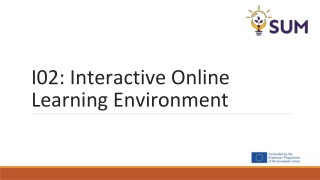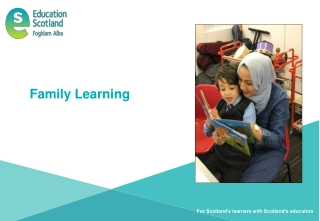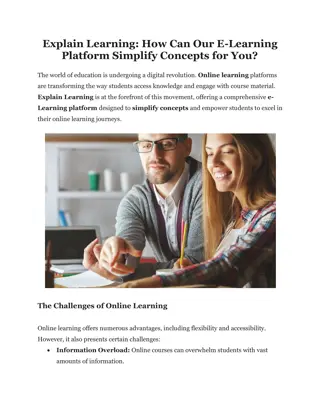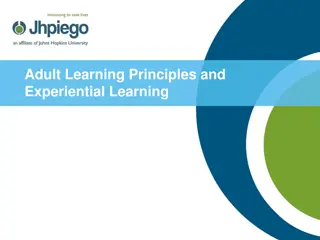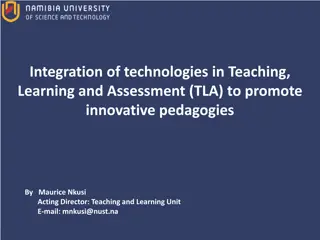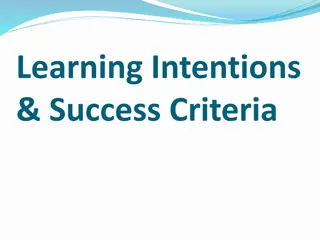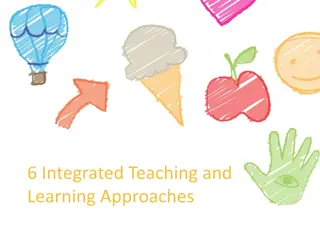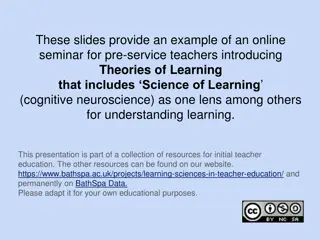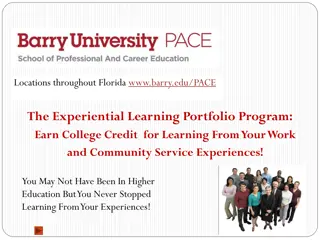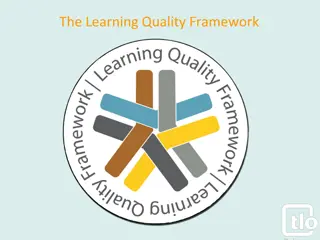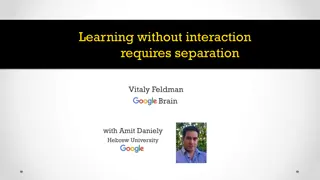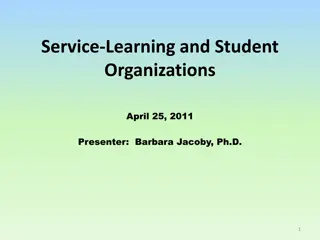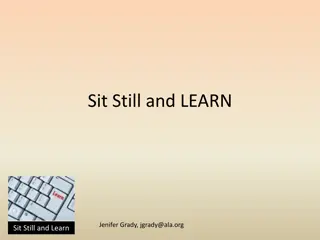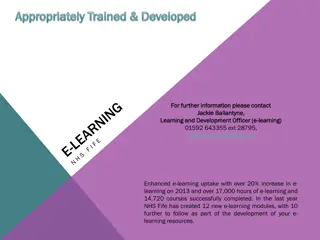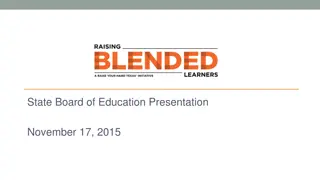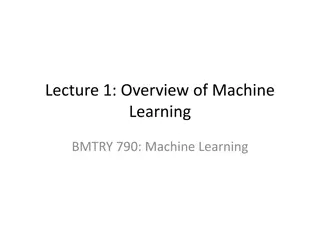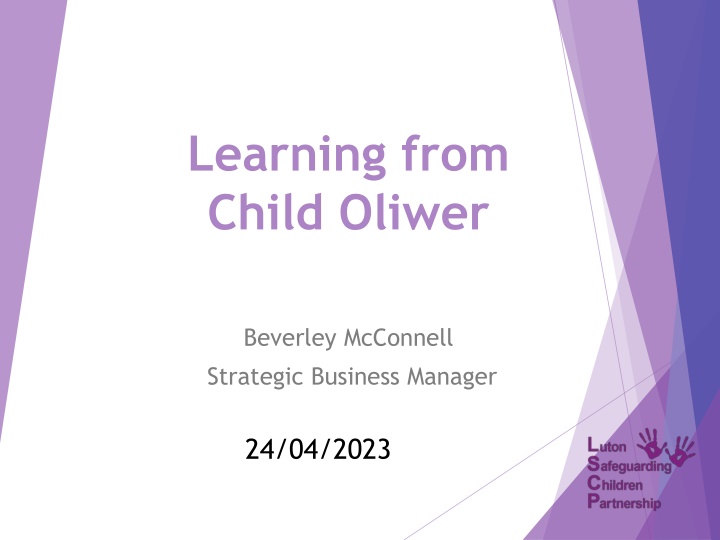
The Challenges Faced by Oliwer: A Case Study in Child Services
Explore the complexities of Oliwer's case, including multicultural aspects, health concerns, and parental experiences with service providers. Delve into the key lines of enquiry regarding risk assessment, cultural understanding, and support services to enhance the well-being of children like Oliwer.
Download Presentation

Please find below an Image/Link to download the presentation.
The content on the website is provided AS IS for your information and personal use only. It may not be sold, licensed, or shared on other websites without obtaining consent from the author. If you encounter any issues during the download, it is possible that the publisher has removed the file from their server.
You are allowed to download the files provided on this website for personal or commercial use, subject to the condition that they are used lawfully. All files are the property of their respective owners.
The content on the website is provided AS IS for your information and personal use only. It may not be sold, licensed, or shared on other websites without obtaining consent from the author.
E N D
Presentation Transcript
Learning from Child Oliwer Beverley McConnell Strategic Business Manager 24/04/2023
Case Overview Oliwer The local learning review examines the contact and involvement of agencies and professionals with a six- year-old child, known as Oliwer. Oliwer was of dual heritage, at the time of Oliwer s death he was living with his mother, his mother s partner, and three half-siblings who were all of Polish heritage. Oliwer did not have contact with his father, who was living abroad. Oliwer died in December 2019 having been ill and not eating for four days. The cause of death was determined as Ketoacidosis with an underlying metabolic condition. Oliwer was known to have autism and special educational needs. In the weeks and months prior to his death he had contact with a small number of agencies and professionals, and there had been concerns about his diet and general health.
The application of thresholds for stepping up and down between the Early Help Service and Children s Services. The quality & effectiveness of work across the multi-agency network when assessing need, risk & intervention. Key lines of enquiry for the review The quality and extent of professional curiosity and rigour when assessing risk, and possible neglect. Understanding about the impact of disability on parenting. Understanding about issues related to culture around the Polish community, and trust in access to services.
Family View of Services Oliver s mum felt staff at Oliwer s pre-school/school were very supportive of Oliwer, patient with him and helped him make good progress to settle into school and learn. She found staff she came into contact with i.e., the Special Educational Needs Coordinator, the Senior Advisory Teacher and the Early Years Advisor (autism), a source of great support and understanding. Oliwer s mother did not feel listened to, or taken seriously, by a range of health professionals, particularly those with whom she tried to explain the difficulties she was experiencing in managing Oliwer s diet and medication.
Family View of Services Although Oliwer appeared healthy and not malnourished, she found herself, for example, struggling to ensure he remained hydrated without giving him sugary drinks which had an impact on his teeth and diet, but also struggled to give him oral pain relief when he was suffering with either stomach or tooth pain. It was difficult to know if the behaviour was being driven by the autism or by a pain or discomfort. She struggled and described sometimes thinking that professionals must have viewed her as the crazy mother but always being polite , and feeling helpless not taking him to see people because I knew it would be the same as before and being ignored . All of this resulted in her not feeling listened to or taken seriously.
Learning Point - Thresholds Consideration about thresholds of intervention, linked to the assessment of need and risk. Using a professional differences and escalation protocol is an entirely acceptable course of action to take if you have a difference of opinion that cannot be resolved at an informal level and where you continue to have concerns about a child s welfare. By not expressing your difference of opinion you are downplaying your professional status, and unwittingly colluding with what may be part of a bigger picture where-by the focus on the child is lost. An important learning point to capture as a result of this finding relates to all professionals feeling able to speak out about their views on thresholds and remaining child focused.
Reflections? Questions?
Learning Point Confirmation Bias Human factors which contributed to assessment and decision making Confirmation bias; once we have formed a picture of a person or family, we have a strong tendency to keep to it, noticing any new information that supports it but tending to overlook or devalue any that challenge it it is a major contributor to tragedies in child protection work . Seeking a fresh pair of eyes on the situation can often help untangle what can become a problem at a later stage. Munro, E., Guide to analytic and intuitive reasoning, 2009, Community Care Inform.
Reflections? Questions?
Learning Point Dental Neglect Human factors which contributed to assessment and decision making The British Dental Association webpages state, Dental neglect may occur in isolation or may be an indicator of a wider picture of child maltreatment. The focus of this definition is on identifying unmet need so that the family can receive the support they need, rather than on apportioning blame. Children have a right to oral health, which forms an integral part of their general health ....
Reflections? Questions?
Learning Point - Curiosity Human factors which contributed to assessment and decision making Research into other Serious Case Reviews states without professional curiosity professionals fail to recognise risks, downplay them, or focus on parents needs to the detriment of the child s professional curiosity requires professionals to think outside the box . Exercising curiosity the asking of questions is a key task for all professionals working with children and families. Pathways to harm, pathways to protection: a triennial analysis of serious case reviews 2011 to 2014, p. 159, University of Warwick & University of East Anglia, May 2016
Reflections? Questions?
Learning Point Complexity Strategic oversight & management of children with special educational needs from a safeguarding perspective For children that have complex needs i.e., health, medical, social and educational, and which often necessitates the involvement of multiple agencies/services there is merit in having a clear line of reporting and oversight in order to help manage the complex interactions that will inevitably emerge. Complexity makes it harder for professionals to understand cause and effect, track and predict events and promote outcomes for children. To manage this complexity and ensure a holistic approach, it is important that the professional network operates strategically rather than a collective effort of isolated interventions and there is a designated lead professional for the whole professional network that is best place to support the child.
Reflections? Questions?
Recommendations for LSCP 1. Examine the best way to ensure dental practices in the local area are alert to dental neglect in children, familiar with referral pathways for them to seek specialist safeguarding support for individual cases where there may be concerns, and understand the need to share information appropriately where neglect/harm may be a feature. 2. Seek assurance, through focused audit, about the quality of assessments for those children with complex additional needs (medical, educational, health, social) and who are also likely to also have special educational need. The assurance exercise should include examining the quality of recording about unmet needs and assessing the contribution of the Designated Clinical Officer role. 3. Seek assurance about how schools provide the appropriate support and safeguarding supervision for individual cases, in order to ensure staff are able to reflect and critically evaluate the welfare and safeguarding needs.
Recommendations 4. Examine whether all partners across the Partnership are satisfied about: a) how threshold assessment and decisions are applied and interpreted for children with additional and complex needs, especially those where support needs appear to be the main issue, rather than those children that are in need of protection. b) whether the threshold guidance is sufficiently clear to allow transparent decision making. c) whether further work is required to support challenge and escalation where there may be differences of opinion. 5. The Partnership, in collaboration with the Children s Trust Board, should: a) facilitate a dialogue with the relevant agencies about which role within the current professional network is best placed to take the responsibility for lead professional for children with additional or complex needs and who have special educational needs.
Domestic Abuse Themes from recent local reviews Emotional Health and Wellbeing Neglect Cultural Competence Thresholds, referral and assessments Recognition and assessment of additional education, health and care needs Contextual Safeguarding and Serious Youth Violence
Key Messages for practice - neglect Gaps in information sharing and communication between agencies and a lack of clarity about how work should be coordinated by targeted or universal services. No agency took on the responsibility to act as the lead professional or coordinate the intervention. This can have a significant effect on outcomes for the child. The lack of curiosity and potentially a reluctance to ask or challenge things in case this may be viewed as defensive or not even considered. In all of the cases, interventions and decisions were made without knowing the context of previous events. More use of the GCP2 as a collaborative tool and a greater awareness of the history of previous concerns and attempts to provide services to families. The Graded Care Profile was not completed or considered.
Key Messages for practice - neglect Failure by parents and carers to take children to medical appointments or to take up other services recommended to promote their development and wellbeing may be an important indicator of neglect. The multi-professional meetings did not rigorously explore the fact that almost all the engagement was being directed by the mother. Some professionals now recognise that they had overestimated the strength and influence of their relationship with the mother and assumed rather than knew that she would do the right thing for the child. An explicit focus in policy and training on the distinction between neglect caused by poverty and other forms of neglect.
Key Messages for practice - neglect Schools to provide the appropriate support and safeguarding supervision for individual cases, in order to ensure staff are able to reflect and critically evaluate the welfare and safeguarding needs. The importance of correct application of thresholds for stepping up and down between services and Children s Services. The importance of quality & effectiveness of the work across the multi-agency network when assessing need, risk & intervention. The quality and extent of professional curiosity and rigour when assessing risk, and possible neglect is key Understanding the impact of child disability on parenting Understanding issues related to culture and ethnicity, and lack of trust in access to services.
Rapid Reviews How we learn together and improve practice Child Safeguarding Practice Reviews Assurance Activity Thematic learning on areas of practice Restorative professionally challenging conversations School Engagement
Key resources http://lutonlscb.org.uk/wp-content/uploads/2021/12/Luton-CSPR- Oliwer-Final.pdf https://bedfordscb.proceduresonline.com/contents.html#Voice http://lutonlscb.org.uk/ http://lutonlscb.org.uk/about-us/policies-and-procedures/ https://bedfordscb.proceduresonline.com/ http://lutonlscb.org.uk/wp-content/uploads/2021/12/Pan-Beds-Multi- agency-audit.pdf http://lutonlscb.org.uk/wp-content/uploads/2022/05/Pan-Beds-Arthur- Labinjo-Hughes-Star-Hobson-Briefing-April-22.pdf
Key resources https://bedfordscb.proceduresonline.com/p_resolution_disagree.ht ml https://bedfordscb.proceduresonline.com/p_recog_respond.html https://bedfordscb.proceduresonline.com/files/what_do_we_know.d ocx https://bedfordscb.proceduresonline.com/files/thresholds_need.pdf https://bedfordscb.proceduresonline.com/p_child_med_asses.html?z oom_highlight=child+protection+medical+assessments https://bedfordscb.proceduresonline.com/p_neglect.html
Reflections? Questions?

